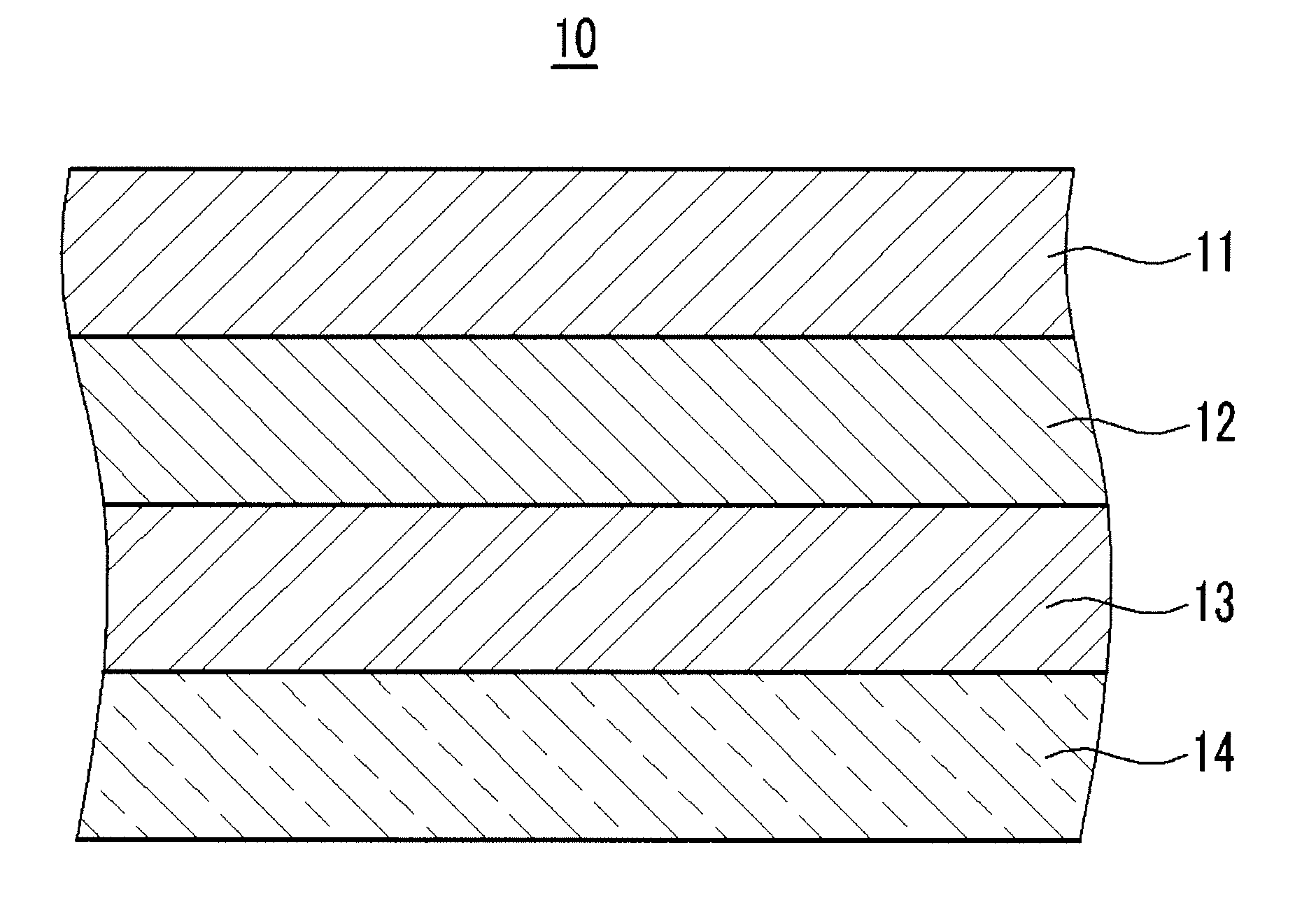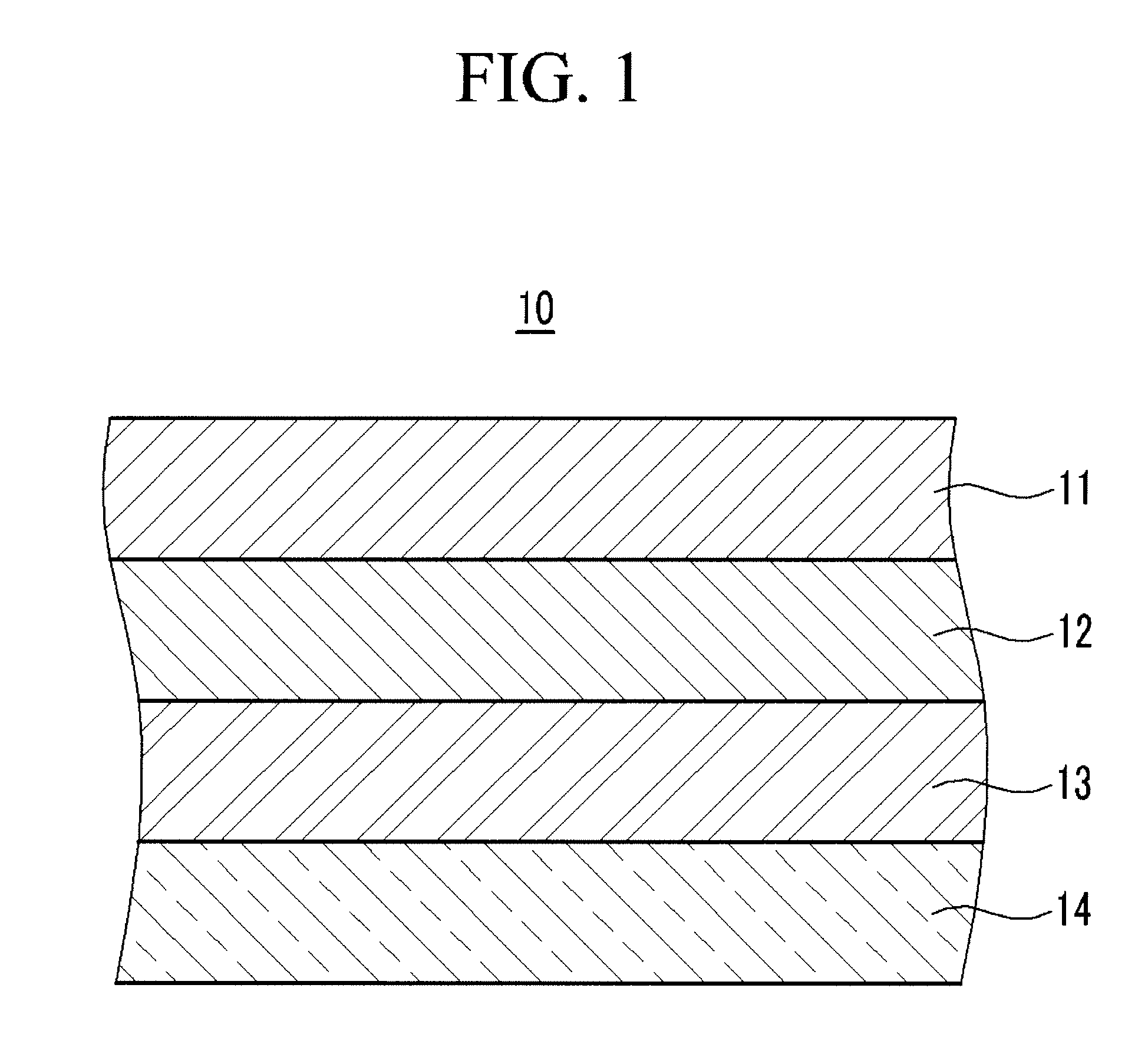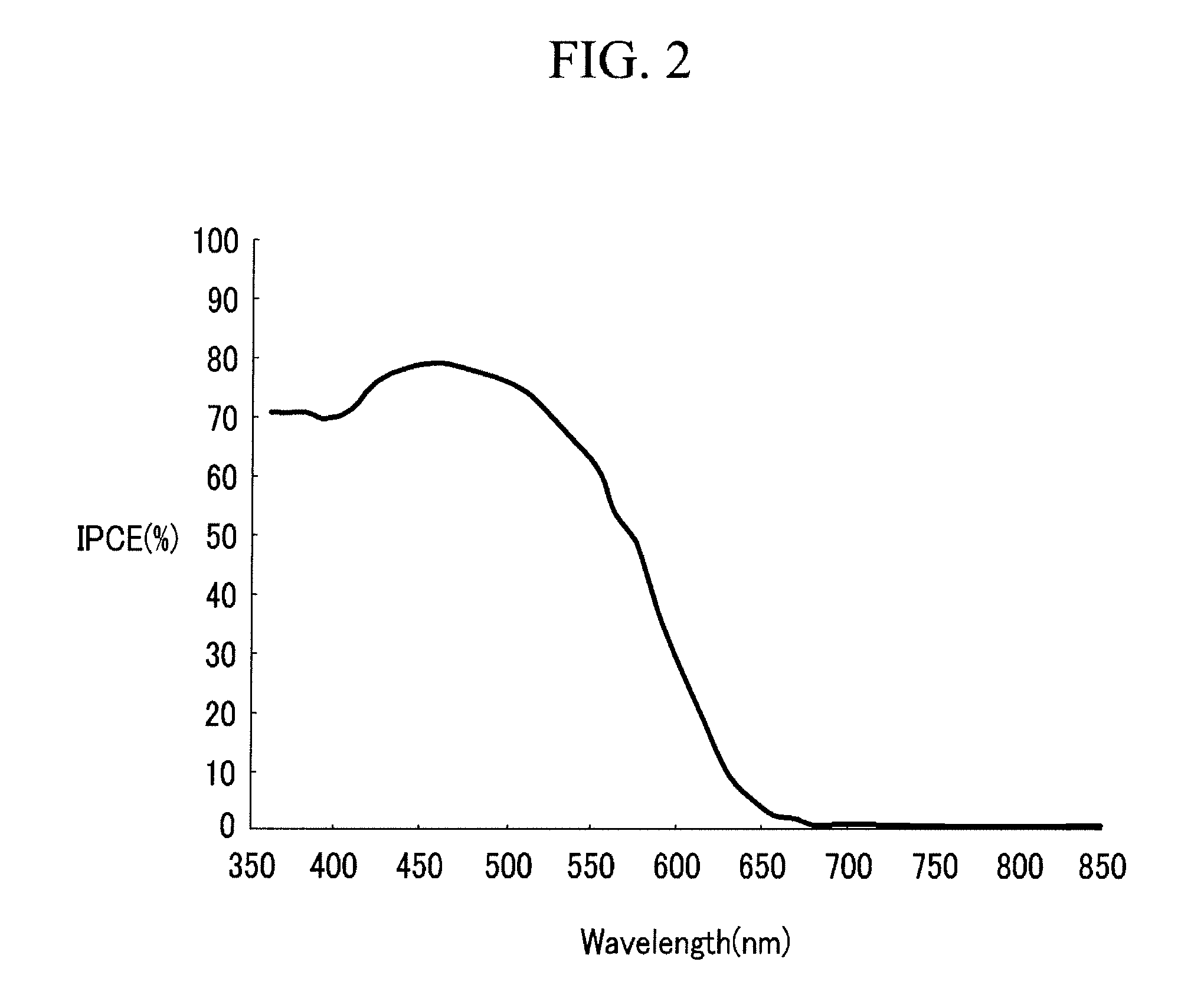Dye for dye-sensitized solar cell and dye-sensitized solar cell including the same
a solar cell and dye-sensitized technology, applied in the direction of metal/polymethine dyes, organic chemistry, electrolytic capacitors, etc., can solve the problems of limited practical application of dye-sensitized solar cells, low photoelectric efficiency, and difficult practicability of si solar cells, so as to improve photovoltaic efficiency
- Summary
- Abstract
- Description
- Claims
- Application Information
AI Technical Summary
Benefits of technology
Problems solved by technology
Method used
Image
Examples
preparation example 1
Preparation of Dye
[0100](E)-3-(5-((5-(4-(bis(9,9-dimethyl-9H-fluoren-2-yl)amino)phenyl)thiophene-2-yl)dimethylsilyl)thiophene-2-yl)-2-cyanoacetic acid was prepared according the following Reaction Scheme 1.
Step 1: Preparation of Compound (1)—Dimethyl Dithiophen-2-yl Silane
[0101]Thiophene (8.4 g, 100 mmol) was dissolved in 100 ml diethyl ether and the resulting solution was cooled to −78° C. Normal butyllithium (62.5 ml, 1.6M hexane solution, 100 mmol) was slowly added to the cooled solution, and after 1 hour, dichlorodimethylsilane (6.4 g, 50 mmol) was further added to obtain a mixed solution. The mixed solution was agitated for 4 hours at room temperature and then extracted with water and diethyl ether. Chromatography (eluent: hexane) was performed on the resulting extract to obtain Compound (1) (yield: 65%).
Step 2: Preparation of Compound (2)—5-(dimethyl(thiophen-2-yl)silyl)thiophene-2-cabaldehyde
[0102]The dimethyl dithiophen-2-yl silane (10 g, 40 mmol) prepared in Step 1 was diss...
example 1
Fabrication of Dye-Sensitized Solar Cell
[0108]A titanium oxide dispersion including titanium oxide particles with a particle diameter ranging from 5 to 15 nm was applied to a 1 cm2 indium-doped tin oxide transparent conductor using a doctor blade, and heat treatment was performed at 450° C. for 30 minutes to form an 18 μm-thick porous titanium oxide layer. The 18 μm-thick porous titanium oxide layer was maintained at 80° C. and immersed in a 0.3 mM dye dispersion (which was prepared by dissolving the Compound (7) (represented by Chemical Formula 2 below) prepared according to Preparation Example 1 in ethanol) to prepare a 0.3 mM dye dispersion. Deoxycholic acid was added to the dye dispersion at a 10 mM concentration, and the titanium oxide layer adsorbed the dye for over 12 hours. The dye-adsorbed porous titanium oxide layer was washed with ethanol and dried at room temperature to form a first electrode with a light absorption layer.
[0109]A second electrode was prepared by depositi...
example 2
Fabrication of Dye-Sensitized Solar Cell
[0111]A dye-sensitized solar cell was fabricated as in Example 1, except that deoxycholic acid was not added to the dye dispersion.
PUM
| Property | Measurement | Unit |
|---|---|---|
| thickness | aaaaa | aaaaa |
| particle diameter | aaaaa | aaaaa |
| average particle diameter | aaaaa | aaaaa |
Abstract
Description
Claims
Application Information
 Login to View More
Login to View More - R&D
- Intellectual Property
- Life Sciences
- Materials
- Tech Scout
- Unparalleled Data Quality
- Higher Quality Content
- 60% Fewer Hallucinations
Browse by: Latest US Patents, China's latest patents, Technical Efficacy Thesaurus, Application Domain, Technology Topic, Popular Technical Reports.
© 2025 PatSnap. All rights reserved.Legal|Privacy policy|Modern Slavery Act Transparency Statement|Sitemap|About US| Contact US: help@patsnap.com



